“However many beings there are in whatever realms of being might exist … in the realm of complete nirvana I shall liberate them all. And though I thus liberate countless beings, not a single being is liberated”
The Three Vehicles
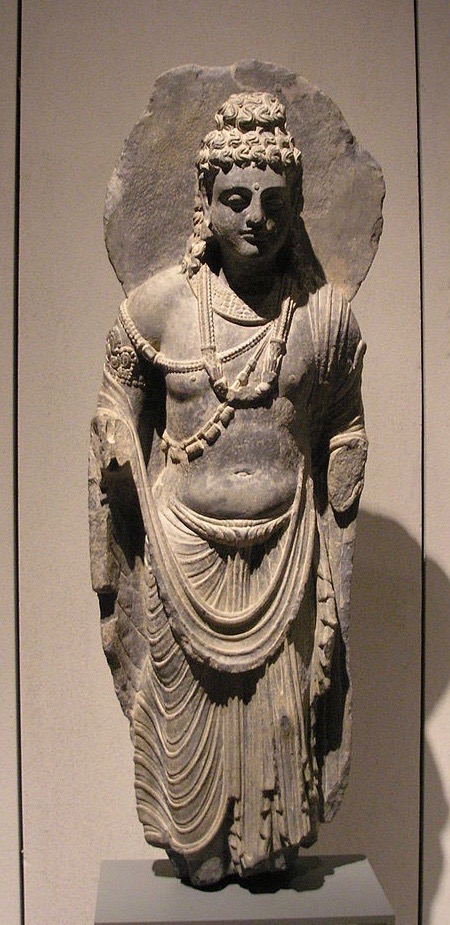
Peter Harvey writes that the movement now known as the Mahayana was originally called “the Bodhisattva-yana or Spiritual Vehicle of the Bodhisattva. This was in contradistinction to the Vehicle of the Disciple (Sravaka-yana) and ‘Vehicle of the Solitary Buddha (Pratyekabuddha-yana) which respectively aimed to become Arhats and Pratyeka buddhas.” According to the later Lotus Sutra, the distinction between three vehicles can be traced to the Buddha’s emphasis on the need to adapt his teaching methods to “the temperament and level of understanding of his audience.” It was said that “the Buddha has just ‘one vehicle’ (eka-yana), the all-inclusive Buddha-vehicle, but he uses his ‘skilful means’ to show this by means of three: the vehicles of the Disciple, Solitary Buddha, and Bodhisattva. He holds out to people whichever of them corresponds to their inclinations and aspirations, but once he has got them to develop spiritually, he gives them all the supreme Buddha-vehicle.” “Skilful means” or “skill in means” (Skt upaya) became a central concept of Mahayana. It allowed Buddhist teachers to design new practices allowing lay individuals to set out on the path leading towards the realisation of the awakening which monks were better able to achieve in the quiet solitude of their monastery or hermitage.
Buddhism had already become a religion
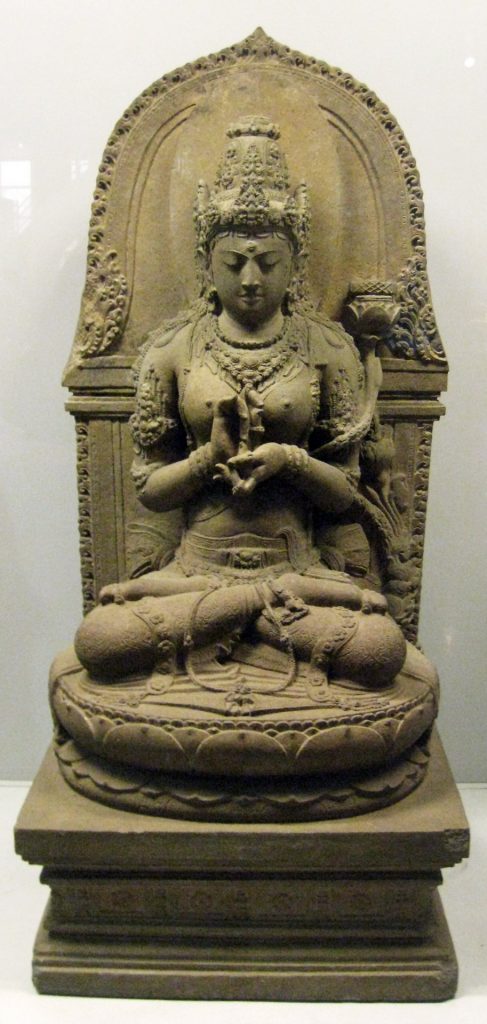
By the time the first Prajnaparamita sutras were composed, between 150 BCE and 100 CE, Buddhism had already engaged the process towards becoming a universal religion for the lay community. As described in more detail in the text on Asoka, this Mauryan ruler had rock and pillar edicts set up in all parts of his empire, exhorting the population to behave according to the ethical values of Buddhism. He founded a great number of stupas where relics of the Buddha were held. He sent missionaries beyond the borders of his empire, going as far as Alexandria in Egypt. Support for Buddhism continued under the reigns of various Indo-Greek monarchs and Kushan ruler Kanishka in the very period where the Perfection of Wisdom texts were being written. In Gandhara, the first representations of the Buddha in human form provided Buddhist followers with a concrete image to help them with the practice of visualisation which had been introduced by the Prajnaparamita sutras.
“A loose confederation of groups, each associated with one or more of a number of new Sutras”
It is now known that monks regarding themselves as part of Mahayana shared the same monastic settings as those regarding themselves as sravakas. “Anyone accepting the new literature as genuine Sutras – authoritative discourses of the Buddha – thereby belonged to the new movement … Traditionalists denied that the new literature was ‘the word of the Buddha’ (Buddha-vacana), like the early Suttas.” Harvey adds that, in time, though the Mahayanists remained a minority in India for many centuries, the “dharma-preachers,” often challenged by those who did not accept the new Sutras, came to present the Bodhisattva-yana as superior to the Sravaka-yana, and refered to it as the Maha-yana, the Great Vehicle, or the Vehicle leading to the Great. “The other ‘vehicles’ were disparaged as being the Inferior Vehicle or Hinayana (see Lotus Sutra). The ‘greatness’ of the new vehicle was seen to lie in the three areas: its compassionate motivation, directed at the salvation of countless beings; the profundity of the wisdom it cultivated; and its superior goal, omniscient Buddhahood.” Red Pine writes that, “although those who emphasise “other power” prefer to interpret yana as “vehicle,” … the word’s original meaning was “path,” because “the path is the destination.” Harvey himself uses the phrase Bodhisattva path throughout the rest of the chapter.
Harvey also insists that it is an error to equate Hinayana with the Theravadins who rejected the claim that the Arhat was selfish because he/she was only thinking of their own awakening. The Arhat in that tradition was described “as imbued with loving kindness and as compassionately teaching others,” just as the Bodhisattva was said to be in Mahayana. Still the Theravadins themselves acknowledged “that the long path to Buddhahood, over many many lives, is the loftiest practice, as it aims at the salvation of countless beings.”
Buddhahood for the sake of helping others
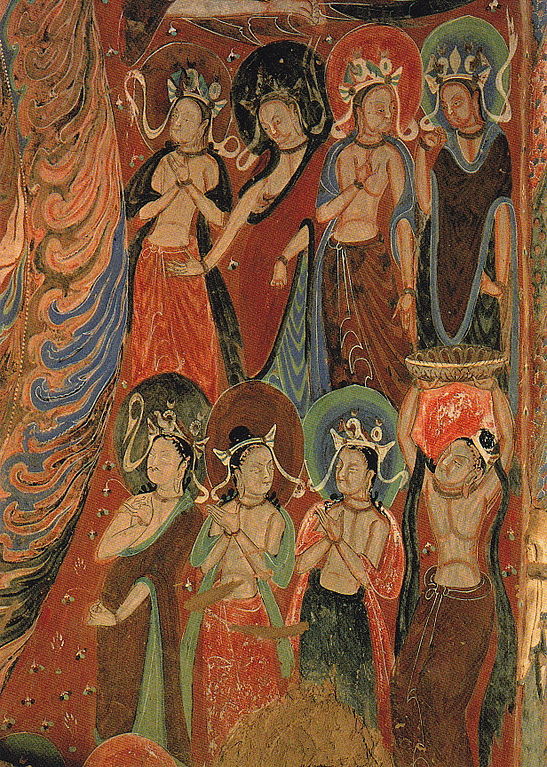
In early Buddhism, the enlightened monk was understood to have entered nirvana, meaning that, at the time of his/her physical death (s)he would not be reborn in another body. The Buddha’s death was regarded as his Parinirvana, that is, nirvana for ever: he would never return to this earth. As the Bodhisattva ideal shifted the focus from personal liberation to the aim of saving other beings, a new word came to the fore – Buddhahood – defined as the ultimate realisation of Perfect (Transcendent) Wisdom, an attainement required to efficiently and wisely help other beings.
The paradox of the Bodhisattva vow: I vow to save all beings, there are no beings to be saved
As the very foundation of Buddhism is the Buddha’s insight into the lack of an unchanging “self,” (anatman as non-abiding self), it may seem paradoxal for the Bodhisattva to wish to save all “beings.” Harvey explains that “In his wisdom (prajna), the Mahayana Bodhisattva knows that there are no “beings,” just fluxes of “dharmas” that lack inherent existence, but his “skilful means” enables him to reconcile this wisdom with his compassion (karuna). This urges him to work for the salvation of all beings, for such empty fluxes do experience “themselves” as “suffering beings.” Though ultimately there are no beings, at the level of what Nagarjuna calls “conventional truth,” there are beings who do suffer. In fact it appears that the distinction between two levels of truth – the conventional and the ultimate – was already found among the teachings of the Mahasamghikas who are credited with the composition of some of the Prajnaparamita texts. You could of course argue that “fluxes” only substitutes a term seemingly expressing a dynamism to the static connotations of “being.” But then, at the level of the ultimate truth, you cannot use words, so the “words” we use when we communicate with each other, are themselves part of conventional truth.
Bodhisattva is a path-term rather than a goal-term
The Bodhisattva path is a long path of practice, with specific stages – ten in all – to be attained through many lives, with the goal of achieving Buddhahood, that is, the Perfection of Wisdom, for its own sake as well as the sake of helping others.
The first step is the arising of the bodhi-citta – the thought of awakening – the heartfelt aspiration to strive for Buddhahood, which the Bodhisattva Vow formally confirms.
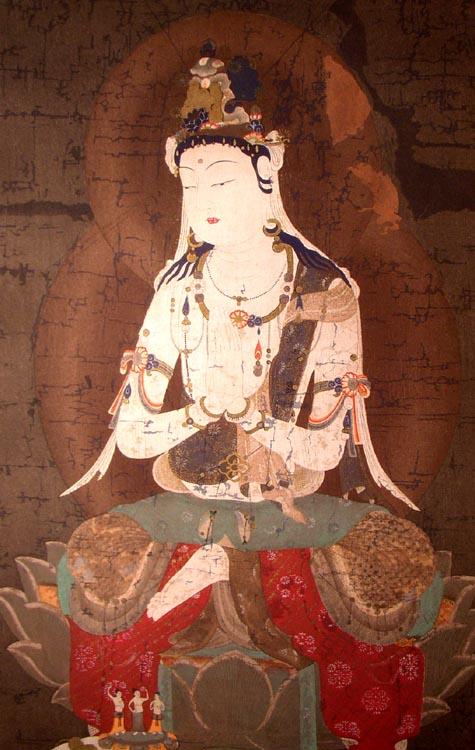
“The Bodhisattva path is practised by developing a number of “perfections” (paramita) and progressing through the ten Bodhisattva “stages” (bhumi). Six “perfections” are described in the Perfection of Wisdom literature, though another four were later added to co-ordinate with the last four of the stages.” The six paramita are generosity (dana), moral virtue (sila), endurance or patient acceptance (ksanti), vigour/energy (virya) meditation (dhyana), and wisdom (prajna). The additional four paramitas are skill in means (upaya-kausalya), vow or determination (pranidhana), power (bala) and gnosis (jnana). Each paramita is cultivated through a set of practices allowing the aspiring Bodhisattva to achieve in turn each of the stages.
“At the completion of stage six the Bodhisattva reaches a level of development parallel to that of the Arhat. He or she is free of … [the] defilements (klesa) of greed, hatred and delusion. At death he could leave the round of rebirths and enter final Nirvana, but his Mahayana “great compassion” prevents him from doing so. Knowing that samsara is not ultimately different from Nirvana, he attains “non-abiding Nirvana” not attached to or resting in either samsara or Nirvana.”
The last three stages take the Bodhisattva to a level transcending that of a human being, allowing them to direct their rebirths. The Bodhisattva attains the 10th stage in the Tusita heaven, where the Bodhisattva achieved the perfection of gnosis (omniscience), and full Buddhahood itself is achieved in the Akanistha heaven. This is how Bodhisattvas came to be worshipped as heavenly saviours. The “hyperbolic” language is obviously intended to inspire devotion among the followers of what is now a religion primarily based on emotional triggers, filling an innate psychological need for transcendence.
Harvey emphasises that the word Bodhisattva refers to anyone on the path, from the monk taking his vow to the fully realised Tathagata. “Bodhisattva is a path-term rather than a goal-term: it refers to the kind of being who is at one or other point along a long path.”
To sum up: two new concepts, Buddhahood and Non-Abiding Nirvana
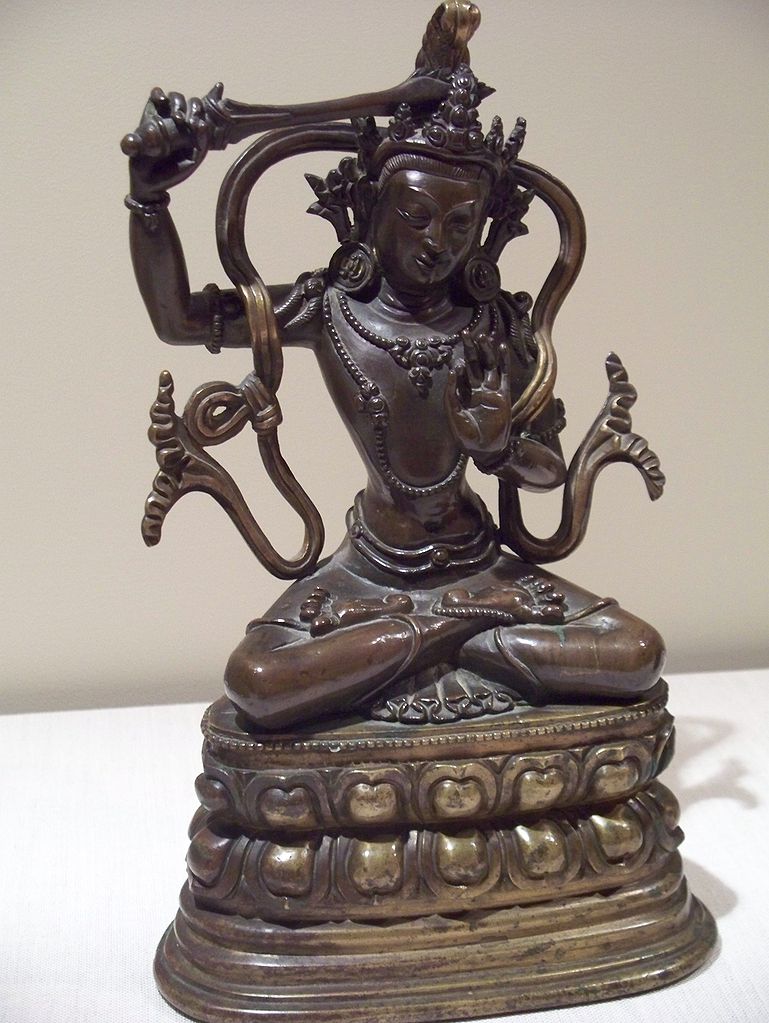
What triggered the composition of the Prajnaparamita sutras, thereby launching the Mahayana movement, is the growth of Buddhism beyond the path of practice of the monk into a religion for the lay community, first under the reign of Asoka, but even more intensely during the Kushan empire. There arose a need to train new teachers, both as human teachers, and as transcendent figures to inspire lay followers. Even though Arhats were undoubtedly compassionate and eager to help others, the Bodhisattva went beyond compassion as he or she aimed at omniscience, which I understand to mean embodiment of perfect, that is, transcendent, wisdom. Hence the composition of the Perfection of Wisdom sutras. With the Bodhisattva-path came the notion of Buddhahood. As a result, in Mahayana, the goal of practice is no longer described as a cessation of suffering through release from the round of rebirths, that is, individual salvation. It is now defined as having realised Buddhahood for the sake of others (as well as its own sake, i.e., unconditionally).
This entailed the emergence of a new concept, that of non-abiding nirvana. In early Buddhism, cessation of suffering was referred to as entering nirvana, and entering nirvana meant not returning to this world after physical death. In order to help “countless beings,” Bodhisattvas had to either stay or return to this world after having attained Buddhahood. At first, it was said that the advanced Bodhisattva “postponed” his or her entry into nirvana, and this explanation is still found in many Buddhist books.
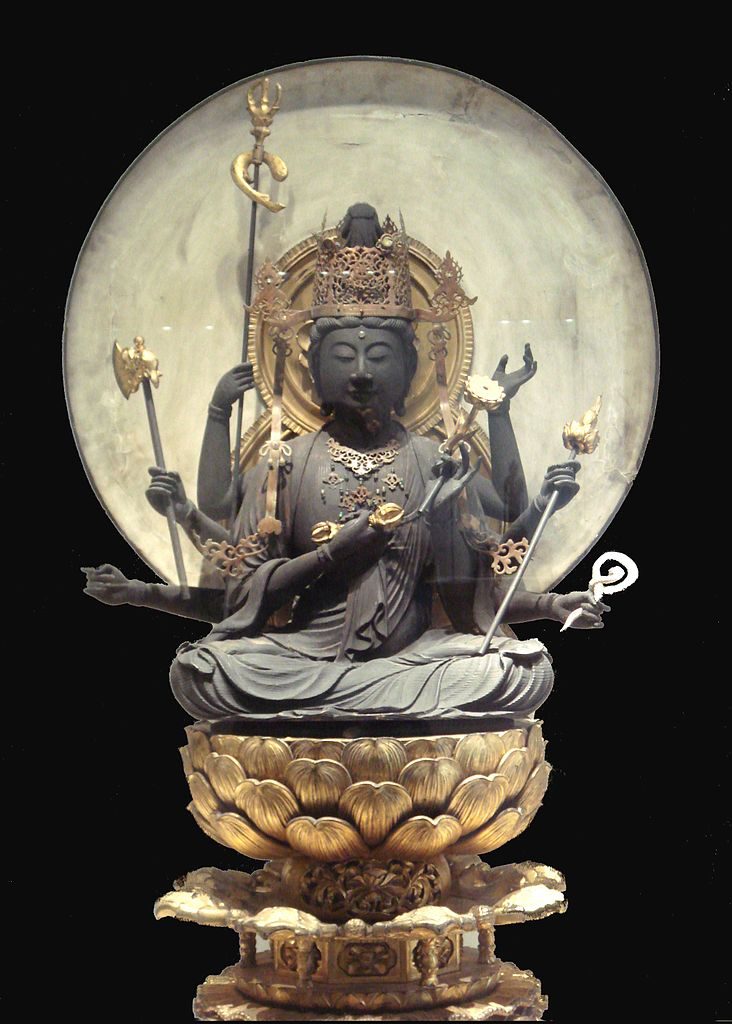
According to Harvey, the problem was eventually solved with the concept of non-abiding nirvana. As samsara and nirvana were seen to be equally empty, it is possible for the Bodhisattva to complete the last stages of the path, and develop the omniscient wisdom to better help suffering beings. A key insight of Mahayana is that “samsara is nirvana, nirvana is samsara,” also encapsulated in the Heart Sutra, the best known of the Prajnaparamita sutras, as “form is empty, emptiness is form.” Though an apparent repetition of the same thing, the second part actually says a lot more than the first. “Form is empty” means that the “self” and all things are empty of own being or substance. “Emptiness is form”, says that the phenomenal world in which I live, is “I.” This means that, as “empty” of own being, I am already the “empty nirvana” I am striving for! In early Buddhism, impermanence was the origin of suffering, and it had, therefore, should be transcended through realisation of the empty self. With Mahayana, there is recognition that phenomenal impermanence is no different from emptiness, what is needed is a new acceptance of the phenomenal nature of ultimate emptiness. I feel, however, that it is only when Buddhism was lived within East Asian contexts, that phenomenality was celebrated in its very impermanence, rather than just accepted as fact. Cherry blossoms are all the more beautiful and precious because they are so ephemeral and fragile.
A new devotional dimension – Buddha-fields and Buddha-lands
What has been for generations of Buddhist practitioners in the West as the key definition of Mahayana, that it had divinised the Buddha and had introduced myriads god-like saints (Bodhisattvas) and celestial Buddhas, together with colourful rituals and ceremonies, remains true. A devotional dimension has been put in place to meet the spiritual requirements of followers whole lives were sustained by emotions and feelings. This devotional dimension has not, however, replaced the ascetic, even alchemic, practice of the monk. It has, instead, been presented as a building up of “faith” in preparation for the latter.
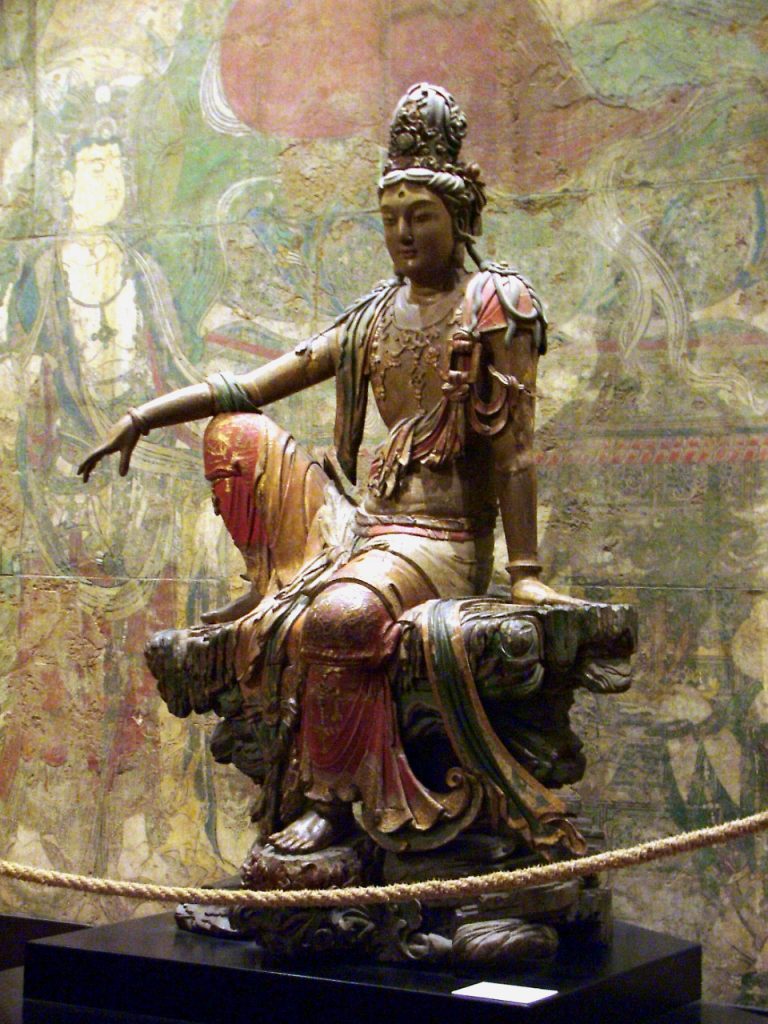
As Harvey explains, each of the Bodhisattvas or celestial Buddhas on which lay followers is called to focus their devotion “is seen to have a ‘Buddha-field’… While these Pure Lands are described in paradisiacal terms, they are primarily realms where it is easy to hear and practise the Dharma: conditions very conducive to attaining awakening … Once faith has led to rebirth in a Pure Land, either as a human-like being or god, a person can develop his or her wisdom and so become either an Arhat or a high-level Bodhisattva.”
Faith can be described as one’s opening to a higher dimension of life, the emotional engagement sustaining the aspiration to transcendence. No self-transformation can be achieved without that aspiration. If, however, faith has no access to practices such as meditation in order to enter into an apprehension of reality unmediated by words, faith tends to wither into mere belief. In Christianity, which arose around the same period, but did not offer its followers the opportunity of a direct “experience” of reality, opening up to transcendence often led to blind acceptance of prophetic utterances. With the notion of a Pure Land, providing ideal conditions for practice, faith was presented as the first step of the path of practice which had been that taught by the Buddha. And, of course, rebirth is no longer understood literally as reincarnation after death. Each moment is a death, as well as a rebirth into the next moment.
Sources
Peter Harvey – An Introduction to Buddhism: Teachings, History and Practice (2013)
Red Pine (Bill Porter) – The Diamond Sutra – Texts and Commentaries translated from Sanskrit and Chinese (2001)
